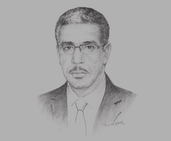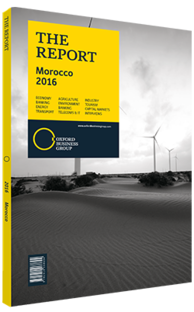Aziz Rabbah, Minister of Equipment, Transport and Logistics: Interview

Interview: Aziz Rabbah
What are the ministry’s objectives in terms of port connectivity?
AZIZ RABBAH: With an average annual growth rate of 8%, port traffic has undergone tremendous change over the past 10 years, reaching 111m tonnes in 2014. In order to address the evolution in traffic, an ambitious port strategy has been adopted in Morocco, with a roadmap to develop port infrastructure by 2030. This strategy, based on the construction of five ports, the rehabilitation of existing ones and the integration of ports in the cities, has been complemented with the establishment of connections with logistics zones. In addition, this roadmap is conceived in a way that ensures regional balance throughout the kingdom through the creation of new ports in the Oriental region, North-West region, Casablanca-Kenitra region, Doukkala-Abda region, Souss-Tansift region and the South.
The port policy also encompasses the development of the necessary infrastructure for ship maintenance. As a result, traffic is projected to hover between 290m tonnes and 370m tonne per year by 2030. This vision has allowed Morocco to rank 16th worldwide in terms of connectivity.
What types of financial tools do you envision for infrastructure projects?
RABBAH: In order to accelerate the development of transport infrastructure, we have restructured our financial model through the adaptation of the public-private partnership law. In this regard, Morocco is looking for new partners.
The public-private partnership law succeeded globally, allowing for a separation of building and operations. This kind of partnership allows for the further development of critical infrastructure while also alleviating foreign debt, and leaves the day-to-day operations to the national company.
What can be done to improve the condition of railways in Morocco?
RABBAH: Investments in railways reached Dh7bn (€641.8m) between 2002 and 2005; Dh18bn (€1.7bn) between 2005 and 2009; and Dh34bn (€3.1bn) in 2010-15. Indeed, these efforts doubled the number of lines on high-traffic railways, connected new special economic zones with high potential for the network, made train stations multifunctional and multi-service, and, above all, created a qualitative technological upgrade with the introduction of high-speed trains, through the launch of the first Arab-African project between Tangiers and Casablanca.
Nevertheless, the evolution of mobility indicators shows the increased need to enhance the capacity of the current network, increase coverage of the national territory and further improve our performance in terms of services. To achieve this, we implemented a long-term development blueprint for national railways in 2007, which encompasses 1500 km of new high-speed train lines and 2750 km of traditional lines.
We are currently updating this blueprint, with a view to focusing on the rail services to be provided to citizens and not on the length of the lines being constructed. This was done in order to optimise investments and guarantee the best connection between different mode of transport.
As such, the project development bank comprises three main areas to be achieved by 2040: projects aimed at the improvement of the current network’s robustness, those aimed at further extending high-speed rail (from 220 to 320 km per hour) and those set to expand the conventional rail. Detailed studies have been launched for major projects, such as the line between Marrakech to Agadir, which is the first step towards the connection of the South to the national rail network.
You have reached the limit of premium articles you can view for free.
Choose from the options below to purchase print or digital editions of our Reports. You can also purchase a website subscription giving you unlimited access to all of our Reports online for 12 months.
If you have already purchased this Report or have a website subscription, please login to continue.

